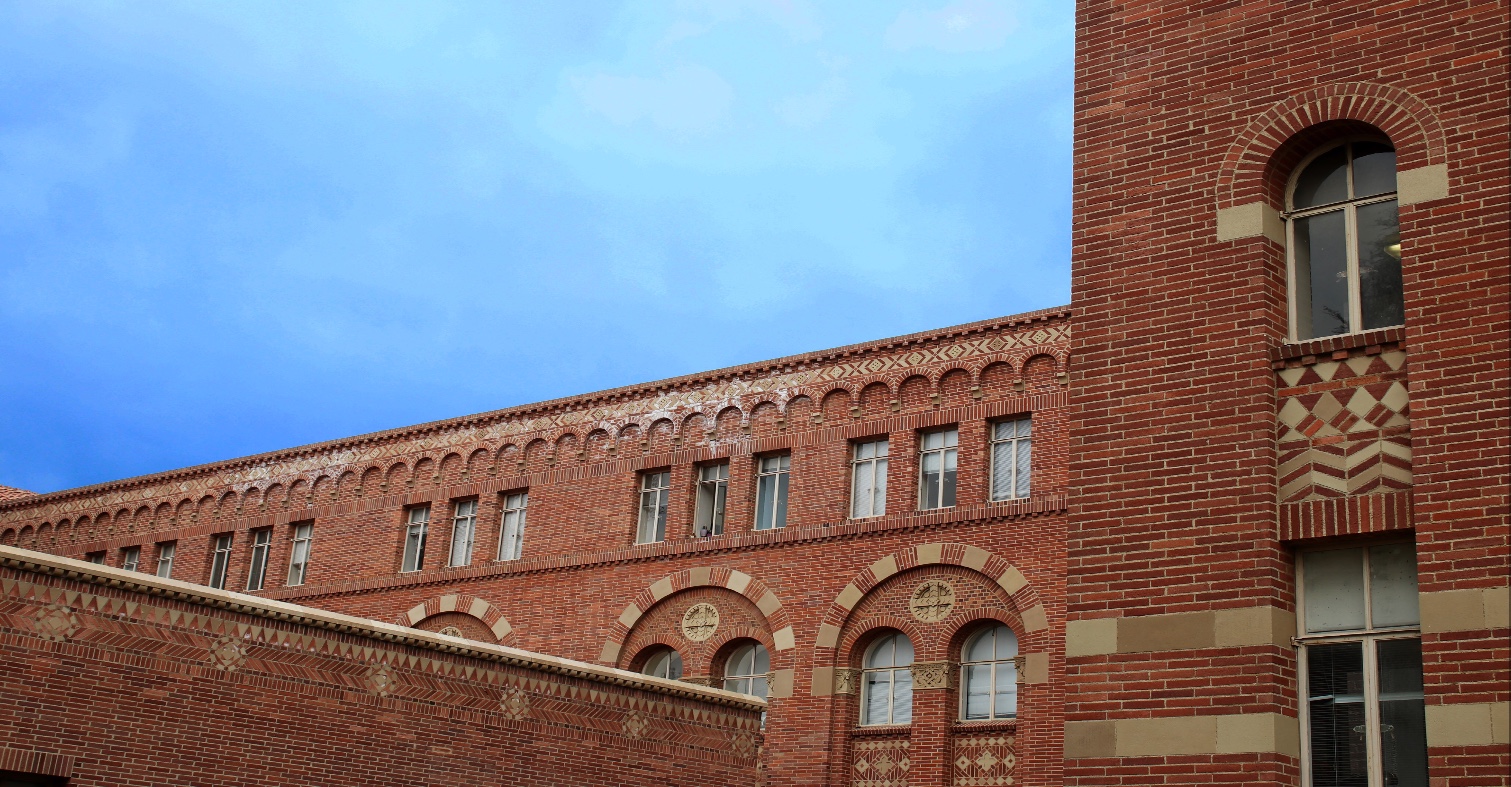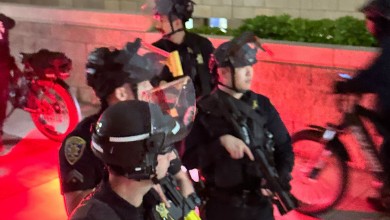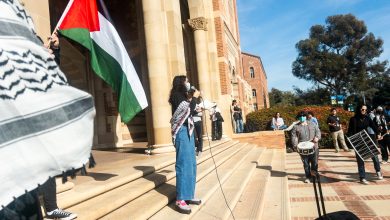What is a University?

Design by Margaret Jackson
On Tuesday, Dec. 4, the UCLA School of the Arts and Architecture held the final session of its “10 Questions” series where for the past ten weeks UCLA faculty members have explored broad yet fundamental questions from the lenses of diverse disciplines. The central question posed for discussion was “What is a university?” Hosted by UCLA Arts Dean Brett Steele, the panel consisted of four members: Bryonn Bain, performing artist and scholar, David Schaberg, comparative literature scholar, Jerry Kang, legal scholar and UCLA vice chancellor for equity, diversity and inclusion, and Robert Watson, poet and Shakespeare scholar.
Strolling across a stage of warmly lit and strategically placed couches, Steele greeted the audience and got down to business by posing the question: what is a university? In his own brief explanation of the subject matter, he considered the long and variant history of the university. While universities are old and stable institutions, Steele saw the definition of a university as malleable, since its contributions to society change over time. He saw a university as a place for intervention, as seen, for example, in Yemen, where college students brought about the beginnings of the Arab Spring, or as a place for invention, as universities were the birthplaces of modern professions, such as engineering, medicine, and the press, allowing for the dissemination of knowledge.
As the cameras rolled on, Steele asked the four others what they considered a university to be, and where it could lead.
First up was David Schaberg, a professor from the Department of Asian Languages and Cultures. For his answer, he turned to what inspired him as a young scholar: historical texts. Dating from 542 B.C. in a small state in China, the first text Schaberg presented dated from 542 B.C China, depicting a discussion between a chief and one of his workers. They discussed the recent development of community members meeting after the workday to engage in discourse about their state’s laws and government.
Schaberg then compared the community’s social critique and discourse about their government to the pressure of rushing water, as he believed both must be “channeled” to sustain order. In what he called the “hydraulic method,” Schaberg suggested that universities are structures built to keep the rushing waters of free critique and discourse from losing control.
Schaberg proclaims that such a method places emphasis on freedom, which he believes is the primary role of the university. A university protects scholars from political influence and questions of economic value. Curiosity and research is never questioned with a condescending, “Why are you doing that?” What the university does, according to Schaberg, is protect knowledge from seeking a profit and provide a platform for the right to speak and exercise reasoning, with a central purpose towards freedom.
Jerry Kang, also a professor at the School of Law, considers a university to be a “city-state on a hill.” His experience as the vice chancellor of UCLA since 2015 has allowed him to have an inside view of the systems that allow a university to function. Kang views a university as a vehicle for striving towards grand ideals and goals.
An ideal that a university can embody is its “essence”. According to Kang, the core essence of a university is its role to “act as a bulwark against catastrophe.” Essentially, with institutions previously seen as infallible failing all around us, the university can be the resource to save society from collapse.
Kang also mentioned that another key mission of a university is “how to create a fair shot.” He questioned what the point of a center of knowledge production could be if it doesn’t work towards providing as many people as possible the tools to succeed. He argued that “this is the university,” with arms outstretched gesturing to the men on stage and the audience listening to their discourse.
The panel, he claimed, was the best example of what a university is and strives to be: individuals with decades of research and experience engaging in conversation in front of an audience, with an open discussion between both parties for a mutual opportunity to think and grow. According to Kang, a university provides the opportunity to engage, and an event such as the “10 Questions” series celebrates just that.
Bryonn Bain, an associate professor of the Department of World Arts & Cultures/Dance and the Department of African American Studies, was interested in utilizing his disciplines in art and culture to figure out what a university is and what it aspires to be. In a masterful combination of hip-hop, rap, and poetry, Bain rhymed aloud how a university can reach its own ideals in providing resources and knowledge to everyone, despite a history of various peoples being barred from such opportunities. In a call and response, Bain introduced to the audience a phrase in an African language that represents the “universal bondage of sharing.” In translation, Bain asked aloud, “What is the university?” Half of the audience responded, “We are,” and the other half concluded with, “And so I am.”
In the second half of his presentation, Bain sat back to showcase the work being done at the California Institute for Women (CIW) through The UCLA Prison Education Program. Interviews and testimonies from inmates and UCLA faculty revealed how transformational access to education was on the lives of the incarcerated. Although the university is known as a center of freedom and expression, Bain argued that in defining a university, it was important to remember those who weren’t always allowed access to such freedoms.
In order to truly be accessible, he continued, a university must grant access and listen to the voices of those with experiences of “unfreedom,” who have been historically barred from accessing the freedom of knowledge provided by universities.
Robert Watson, a Neikirk Distinguished professor of English, proclaimed a university to be an experiment by our species in discipline and liberty. He argued that scholars break down assumptions to fight against tribalism and conformity, and that the safety a university provides in the convening of different views not only prevents indoctrination, but enables the resistance against it.
Watson rallied against private business and partisan interests as dangers to the freedom of truths a university provides. He expressed a distaste for the quantification of knowledge by explaining how the private sector sneers at the public sector as a waste of money, while also molding it into a business with immediate pay-off. Instead of focusing on “real world” applications of the knowledge a university provides, we have to allow access to all peoples in order to speak truth to power, and for society to march on.
The speakers and audience ended the session with explorations of UCLA as an enterprise and as a university, its admissions, and the extent of its access towards outside communities. One message was loud and clear: there was no clear singular definition of what a university is. However, as one of the students in attendance, and as one of the beneficiaries of an institution built to provide resources and knowledge for the betterment of society, two things were in fact clear: We were the university, and so was I.




